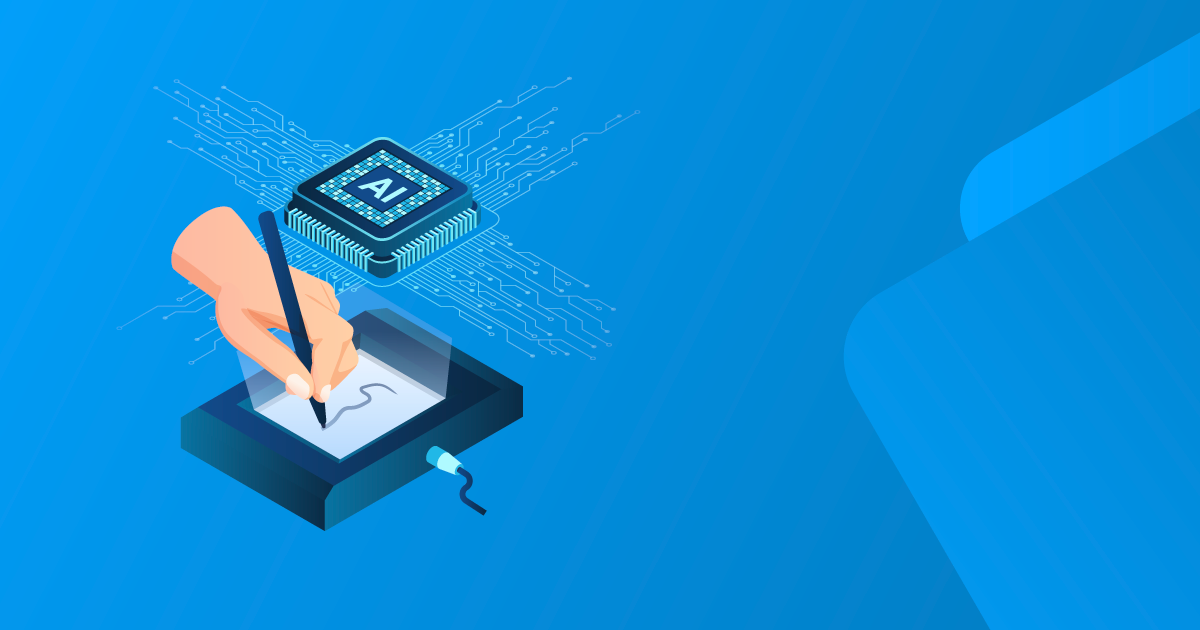
June 20, 2025
Enhancing Confidence in Signature Validation with AI

With increasing demands for speed and accuracy, financial institutions face growing pressure to process thousands of documents and transactions every day. Among the most critical steps in this process is signature validation, a longstanding method used to authenticate and approve financial operations. Traditionally a manual, human-driven task, its limitations are becoming increasingly evident.
As digital transformation reshapes the financial landscape, the demand for signature validation that is reliable, scalable and automated is stronger than ever — and AI is rising to meet it.
The Pitfalls of Manual Signature Verification
Manual signature verification presents numerous challenges, especially in high-volume environments. Processing a large load of transactions within a tight timeframe often requires a significant number of business users, each responsible for verifying signatures by hand. This approach is not only inefficient but also highly error prone.
In many documented cases, fraudulent signatures have slipped through undetected, and even blank signature fields on critical financial documents have been overlooked. Human oversight is inevitable when fatigue and pressure mount. Additionally, many employees rely on memory to recognize signatories, a dangerous practice that disconnects the signature from its originating account and fails to account for natural changes in handwriting over time.
Another pressing issue is the inherent subjectivity of manual verification. Signature validation is not an exact science, it depends heavily on the expertise, judgment and even the emotional state of the verifier at the time of review. Consequently, two experts might arrive at different conclusions when assessing the same signature. This lack of consistency undermines the reliability and security of the entire validation process.
Why Earlier Digital Approaches Fell Short
Recognizing the shortcomings of manual verification, earlier attempts have been made to automate the process using image-based algorithms and statistical methods. While these methods were a step in the right direction, they introduced their own set of limitations and challenges.
One major problem lies in extracting clean, high-quality signature images. Real-world documents are rarely clean. Signatures often overlap with printed lines, text or background artifacts. Signatories may write partially outside designated signature areas, and lighting or scanning inconsistencies further complicate extraction. Many of the earlier solutions struggled to cope with such variations and, in some cases, required changes to the design of financial documents, which is a costly and impractical workaround for many organizations.
Furthermore, these traditional methods relied heavily on custom-built preprocessing pipelines. These pipelines were designed to normalize signature images for fair comparison, but the complexity and variability of document inputs often rendered them fragile and error prone.
Statistical and feature-based approaches also required manual selection of key characteristics such as stroke width, slant or curvature to be extracted and compared. However, any manual chosen set of features is inherently limited and may not generalize well across different users or signature styles. In practice, this meant accuracy was often sacrificed for the sake of simplicity or technical feasibility.
The Rise of AI: A New Era for Signature Validation
The emergence of deep learning and AI has revolutionized signature validation, offering solutions that address many of the limitations of both manual and early automated approaches.
Deep learning-driven models, can learn from vast datasets of real-world signatures, capturing complex and nuanced features that would be impossible to define manually. These models are capable of distinguishing between genuine and fraudulent signatures with impressive accuracy, and without being affected by fatigue, emotion or memory bias.
More importantly, deep learning models offer generalization capabilities, meaning they can handle a wide variety of document types, signature placements and visual conditions without requiring manual tuning or changes to the underlying document design. The AI learns directly from the data and adapts to subtle variations, making it far more robust than traditional image-based methods.
Incorporating AI into signature validation also brings process standardization. Each signature is evaluated under the same objective criteria, ensuring fairness, consistency and transparency. This allows financial institutions to scale operations confidently, without relying on subjective human judgment.
Looking Ahead: AI as a Business Imperative
As financial institutions navigate the ongoing wave of digital transformation, many still rely on wet signatures for legal and operational reasons. In this context, adopting an AI-based signature validation system is no longer a luxury, it is a strategic necessity.
AI solutions enhance trust, improve compliance, reduce operational costs and most importantly, protect institutions from fraud. They enable businesses to automate previously manual processes while maintaining and even increasing the accuracy and reliability of signature verification.
In a world where regulatory expectations are high, and operational efficiency is key, AI provides a powerful tool for organizations aiming to modernize their validation workflows without sacrificing control or integrity.
Conclusion
Manual and early digital methods of signature validation can no longer meet the demands of today’s high-volume, high-risk financial operations. AI offers a transformative solution, combining speed, accuracy and scalability. For financial institutions seeking to enhance confidence in their processes while staying competitive in a rapidly evolving market, embracing AI-powered signature validation is a crucial step forward.



